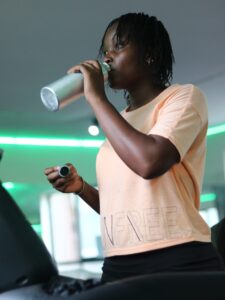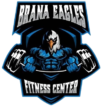
Ms. JANE NAIROBI
Trainer
In summary, functional training is a holistic approach to fitness that aims to improve overall strength, stability, flexibility, and coordination through exercises that mimic everyday movements. This type of training not only enhances physical performance in daily activities but also reduces the risk of injuries and improves quality of life.
FUNCTIONAL TRAINING
Functional training is a type of exercise that focuses on improving the body’s ability to perform everyday activities efficiently and safely. It involves exercises that train the muscles to work together, mimicking common movements you might do at home, work, or in sports. The goal is to enhance overall functional strength, stability, flexibility, and coordination.
SUMMARY OF FUCNTIONAL TRAINING
Explanation of Functional Training
- **Movement Patterns**: Functional training emphasizes natural movement patterns such as pushing, pulling, squatting, lifting, bending, twisting, and walking. These exercises are designed to improve the performance of daily tasks.
- **Multi-Joint Exercises**: Functional exercises typically involve multiple joints and muscle groups working together. This contrasts with traditional strength training, which often isolates specific muscles.
- **Core Stability**: A significant component of functional training is core stability. A strong core improves balance and stability, reducing the risk of injuries during daily activities and other forms of exercise.
- **Balance and Coordination**: Functional training often incorporates exercises that challenge balance and coordination, such as single-leg movements or using unstable surfaces like balance boards and stability balls.
- **Equipment**: Functional training can be done with various equipment or even bodyweight. Common tools include kettlebells, resistance bands, medicine balls, stability balls, BOSU balls, and TRX suspension trainers.
- **Real-World Application**: The exercises are practical and applicable to real-world activities. For example, lifting a heavy grocery bag can be simulated with a kettlebell deadlift, or reaching for something on a high shelf can be mimicked by an overhead press.
Benefits of Functional Training
– **Improved Daily Functioning**: Enhances the ability to perform daily tasks with ease, reducing the risk of injury.
– **Increased Strength and Flexibility**: Builds overall body strength and improves flexibility, making the body more resilient.
– **Better Balance and Coordination**: Enhances balance and coordination, which is particularly beneficial for older adults and athletes.
– **Core Stability**: Strengthens the core muscles, supporting better posture and reducing back pain.
– **Versatility and Adaptability**: Can be tailored to individual needs and fitness levels, making it accessible for everyone from beginners to advanced athletes.
Examples of Functional Training Exercises
- **Squats**: Mimic the movement of sitting and standing, strengthening the legs and core.
- **Lunges**: Improve balance and leg strength, simulating walking or climbing stairs.
- **Push-Ups**: Enhance upper body strength, mimicking pushing motions.
- **Deadlifts**: Strengthen the posterior chain, mimicking the action of lifting objects from the ground.
- **Planks**: Build core stability and strength.
- **Kettlebell Swings**: Improve explosive power, core stability, and cardiovascular endurance.
- **Medicine Ball Throws**: Enhance upper body strength and coordination.
Key Components of Functional Training
– **Compound Movements**: Exercises that engage multiple muscle groups and joints.
– **Stability and Balance**: Incorporates exercises that challenge and improve balance and stability.
– **Dynamic Flexibility**: Focuses on maintaining flexibility through movement.
– **Core Engagement**: Emphasizes exercises that strengthen the core muscles.
– **Functional Equipment**: Uses versatile equipment that can simulate real-life activities.


